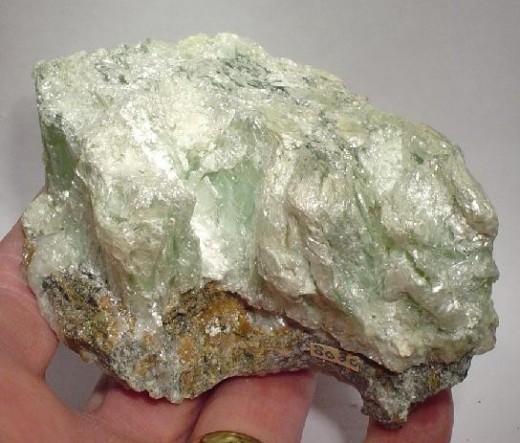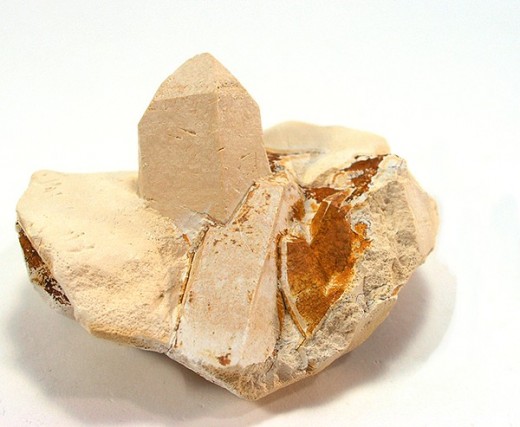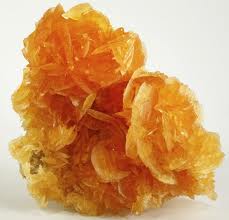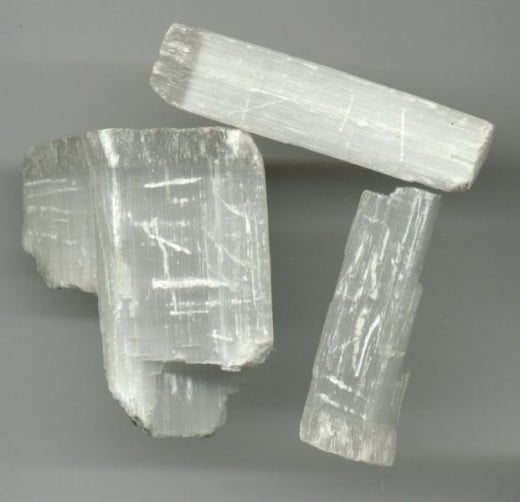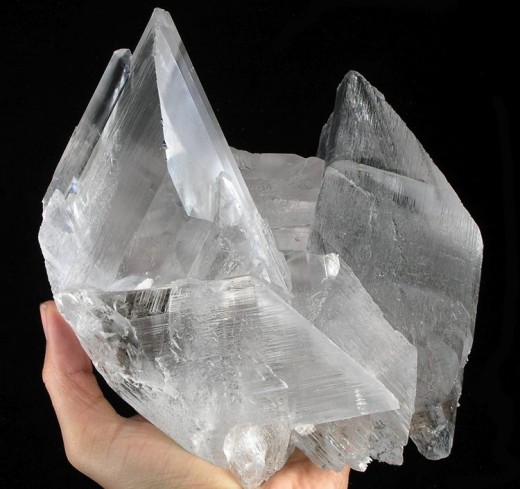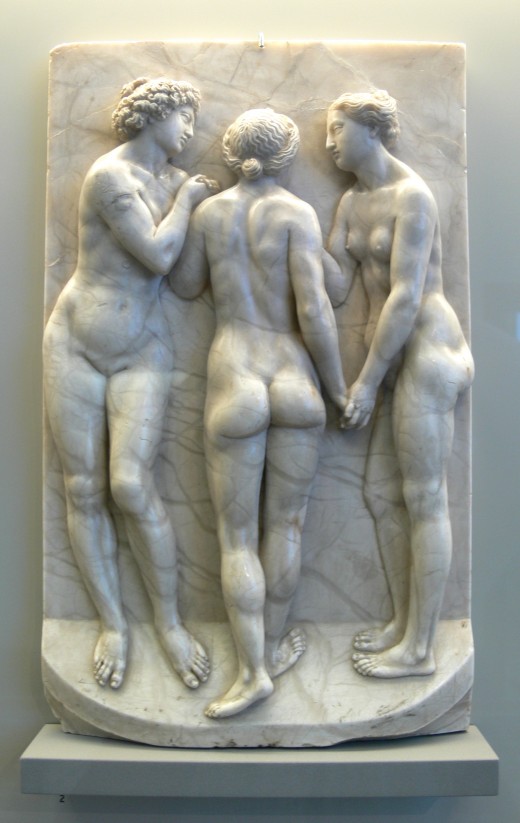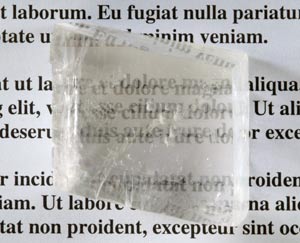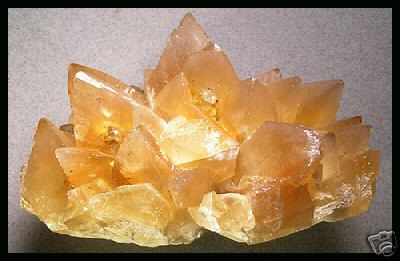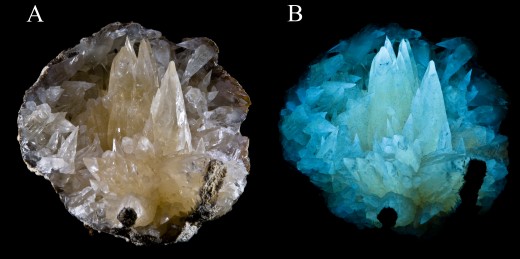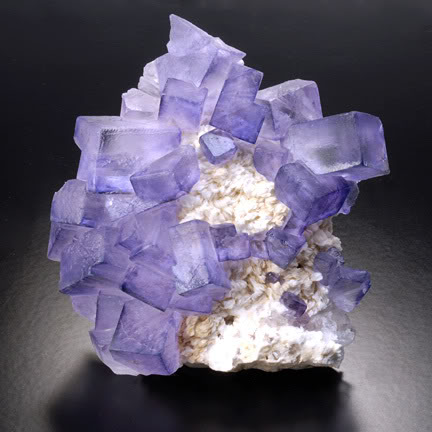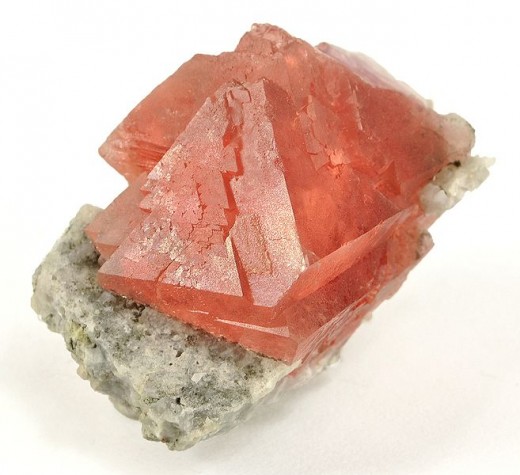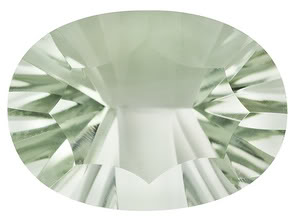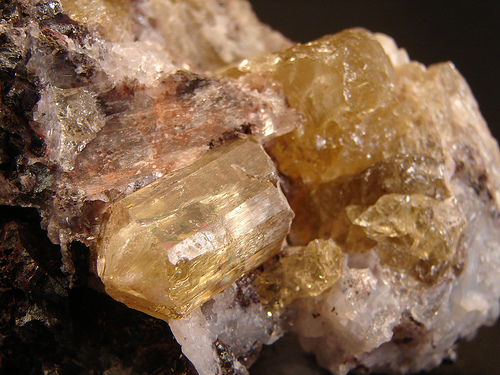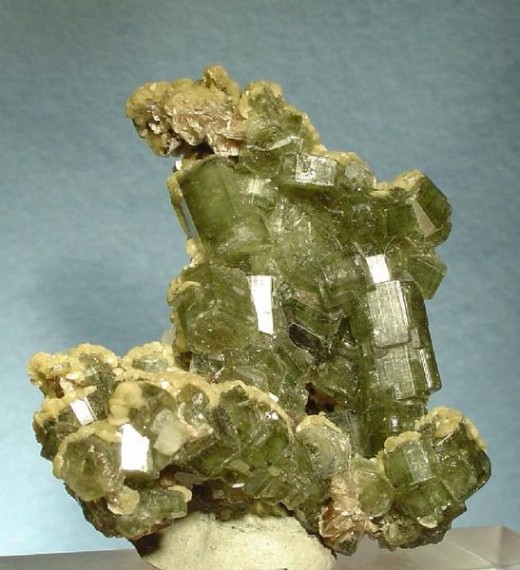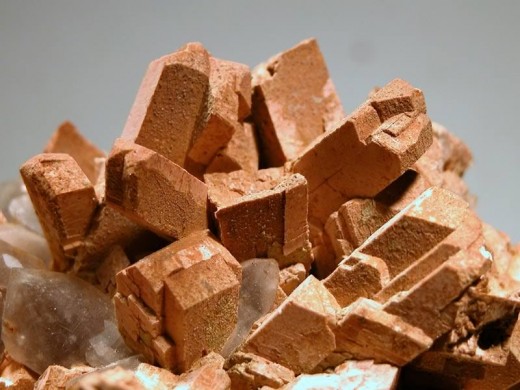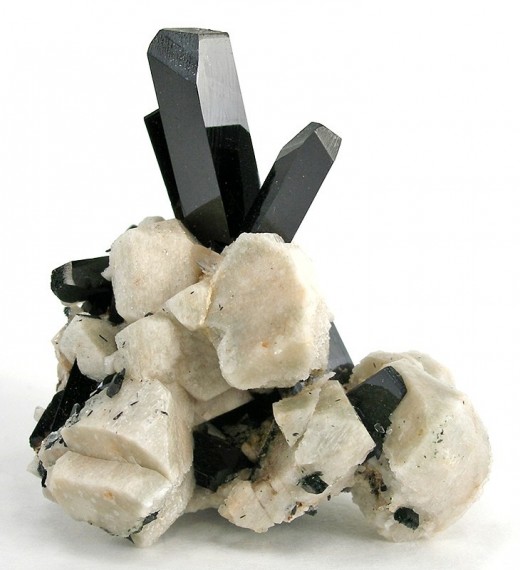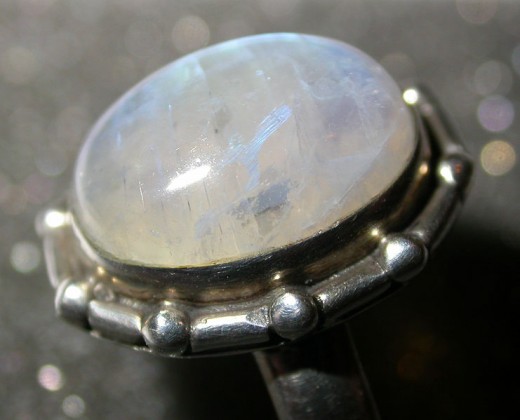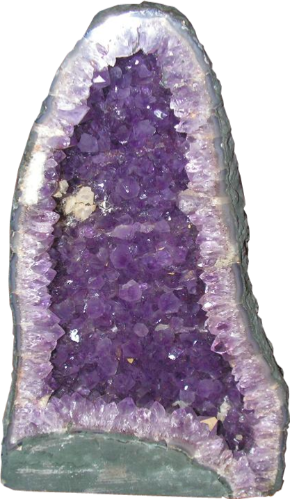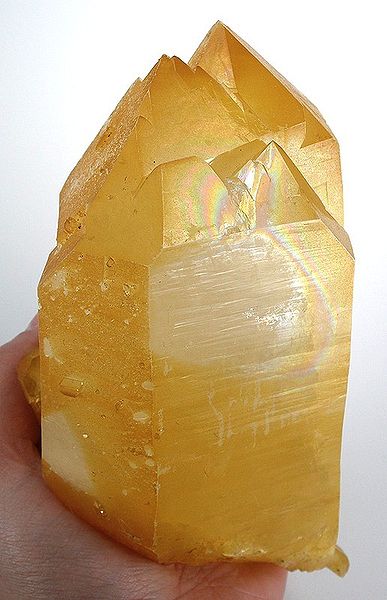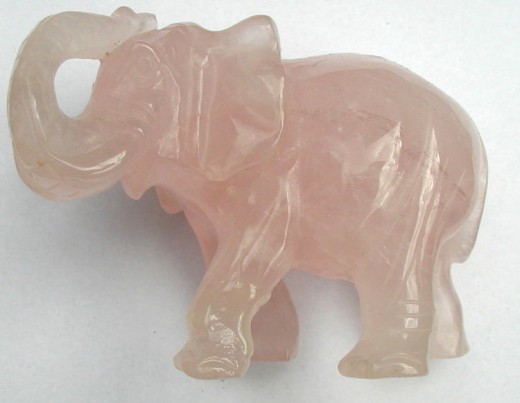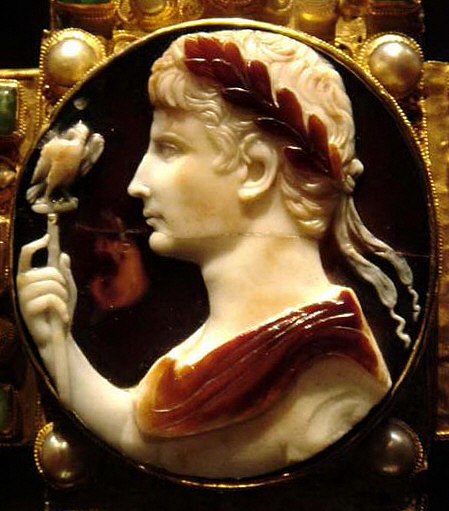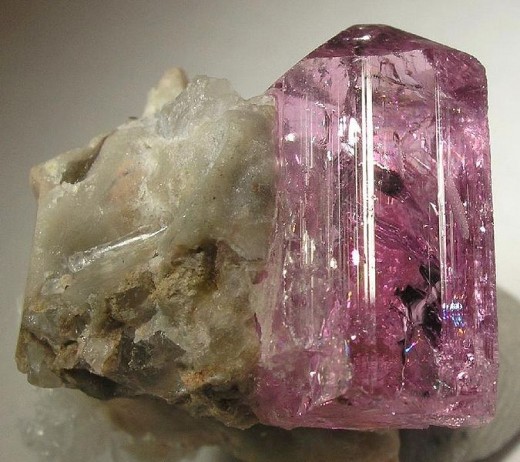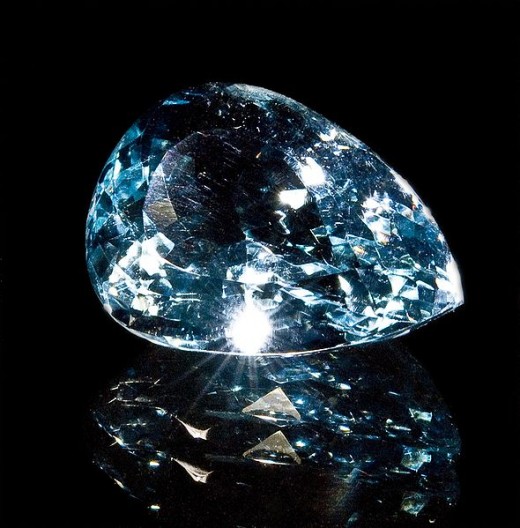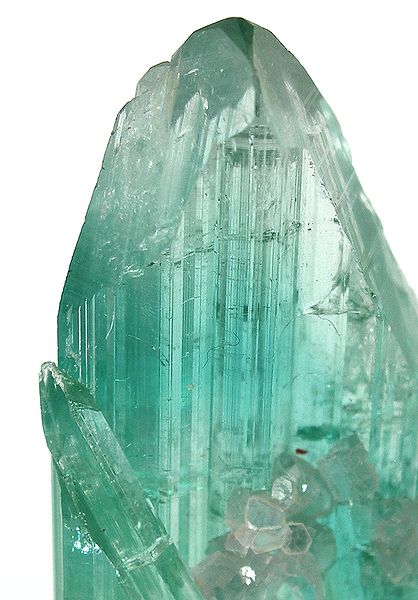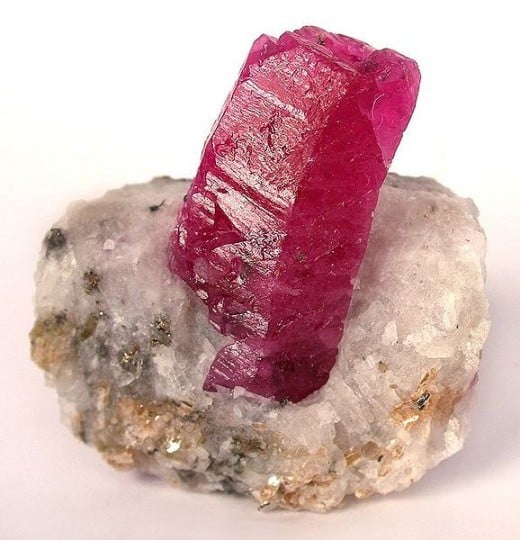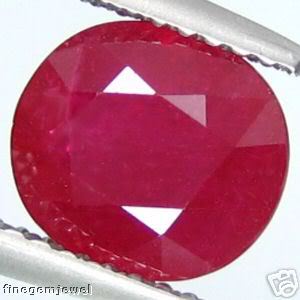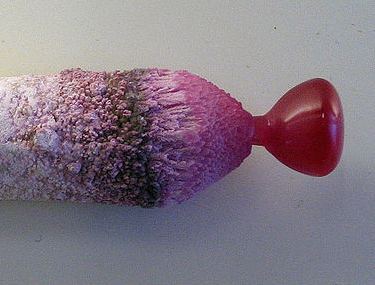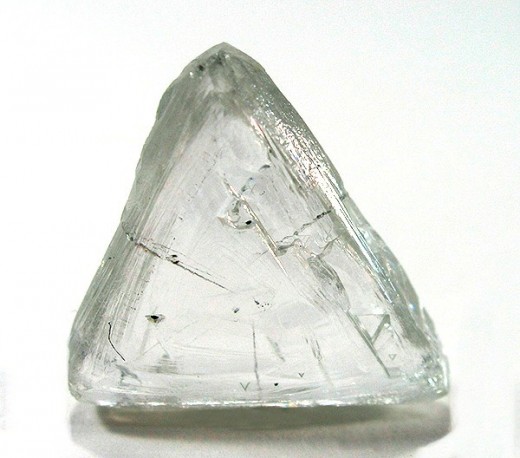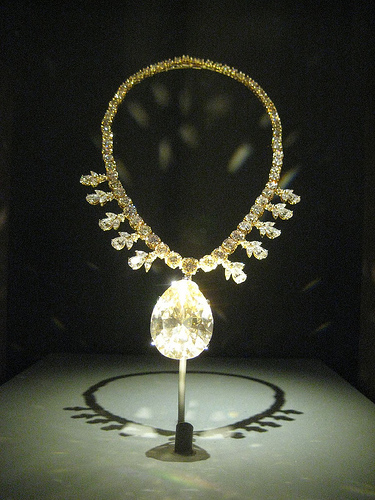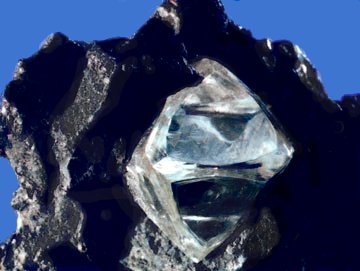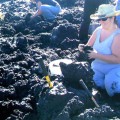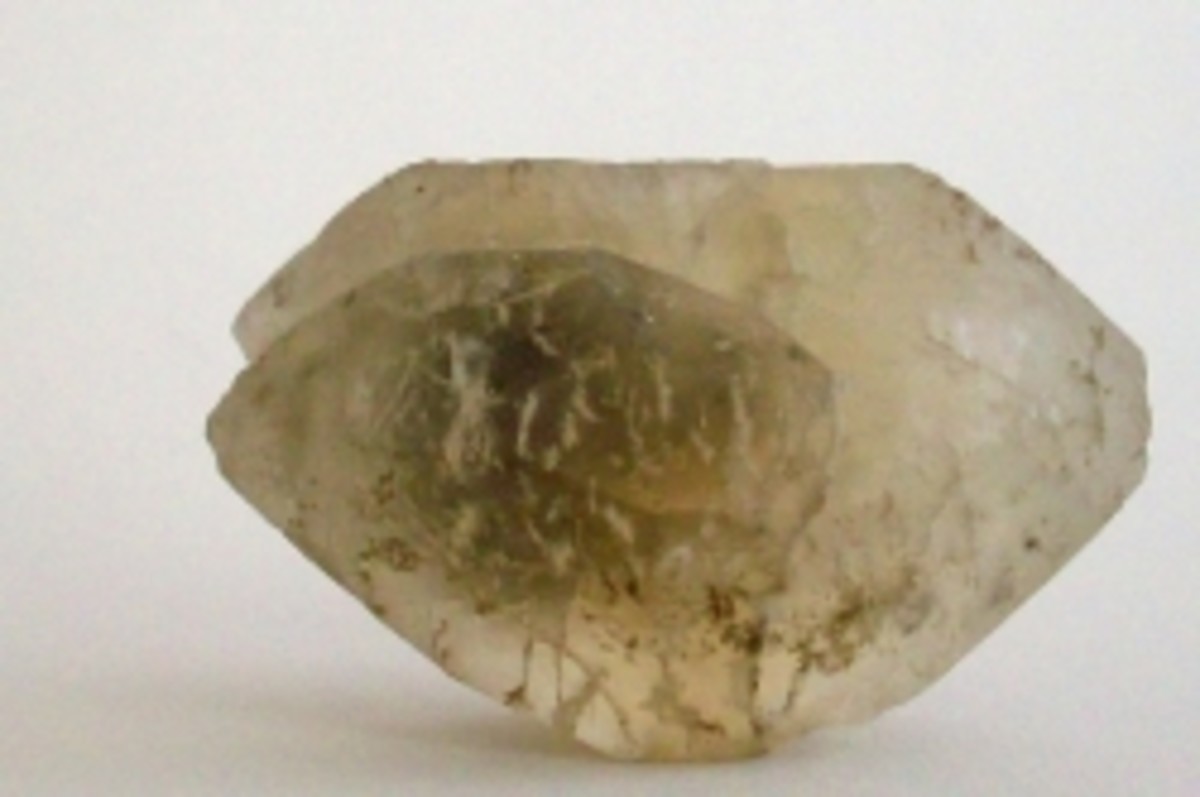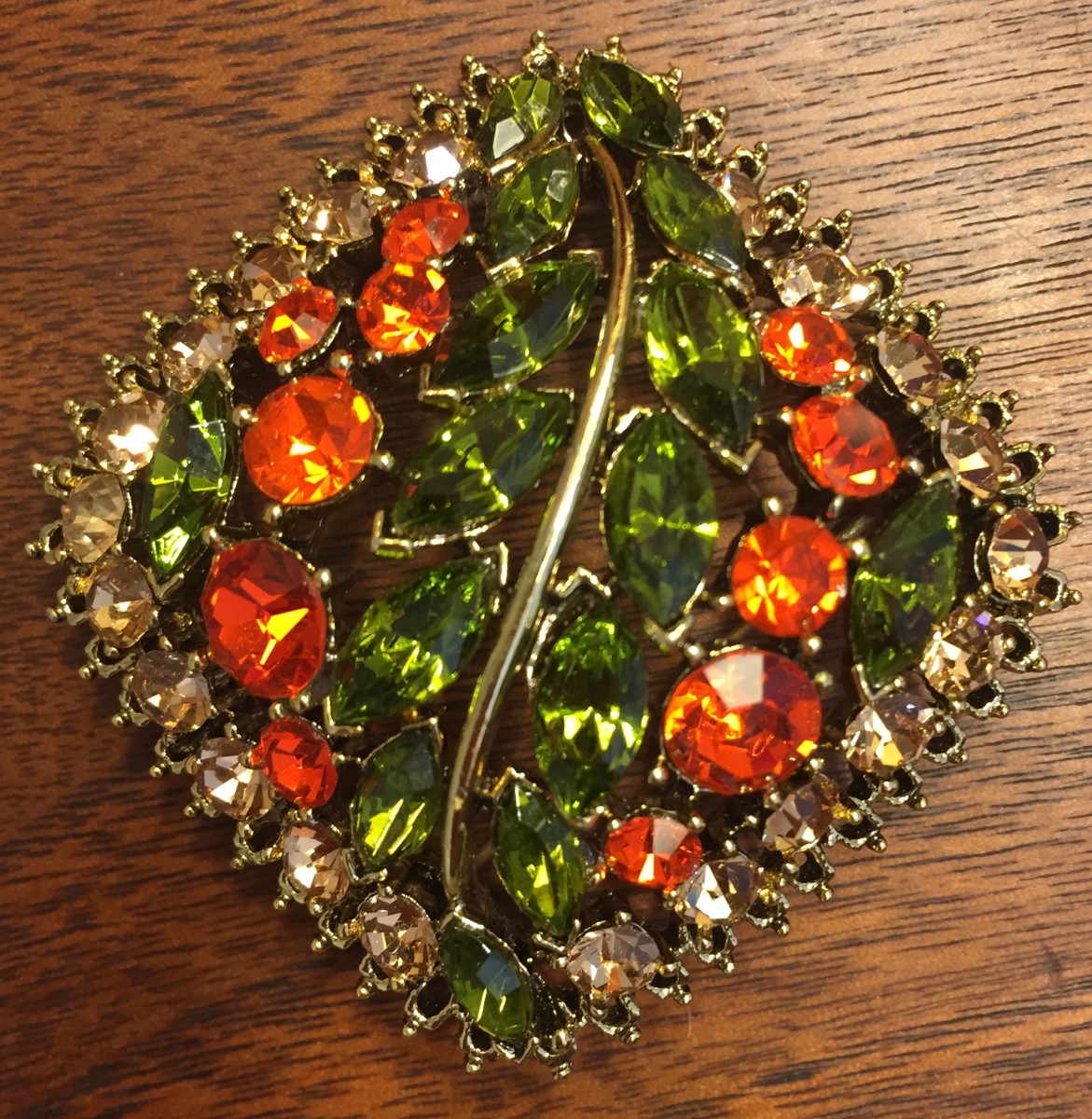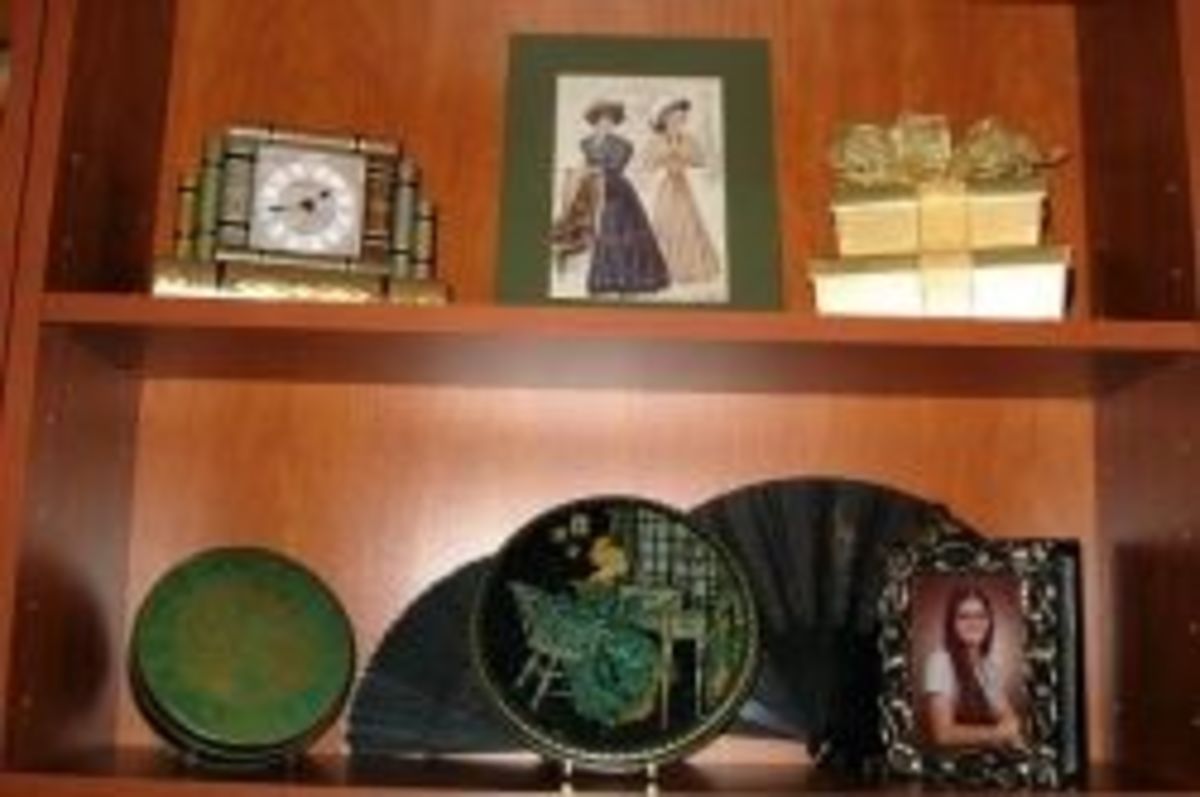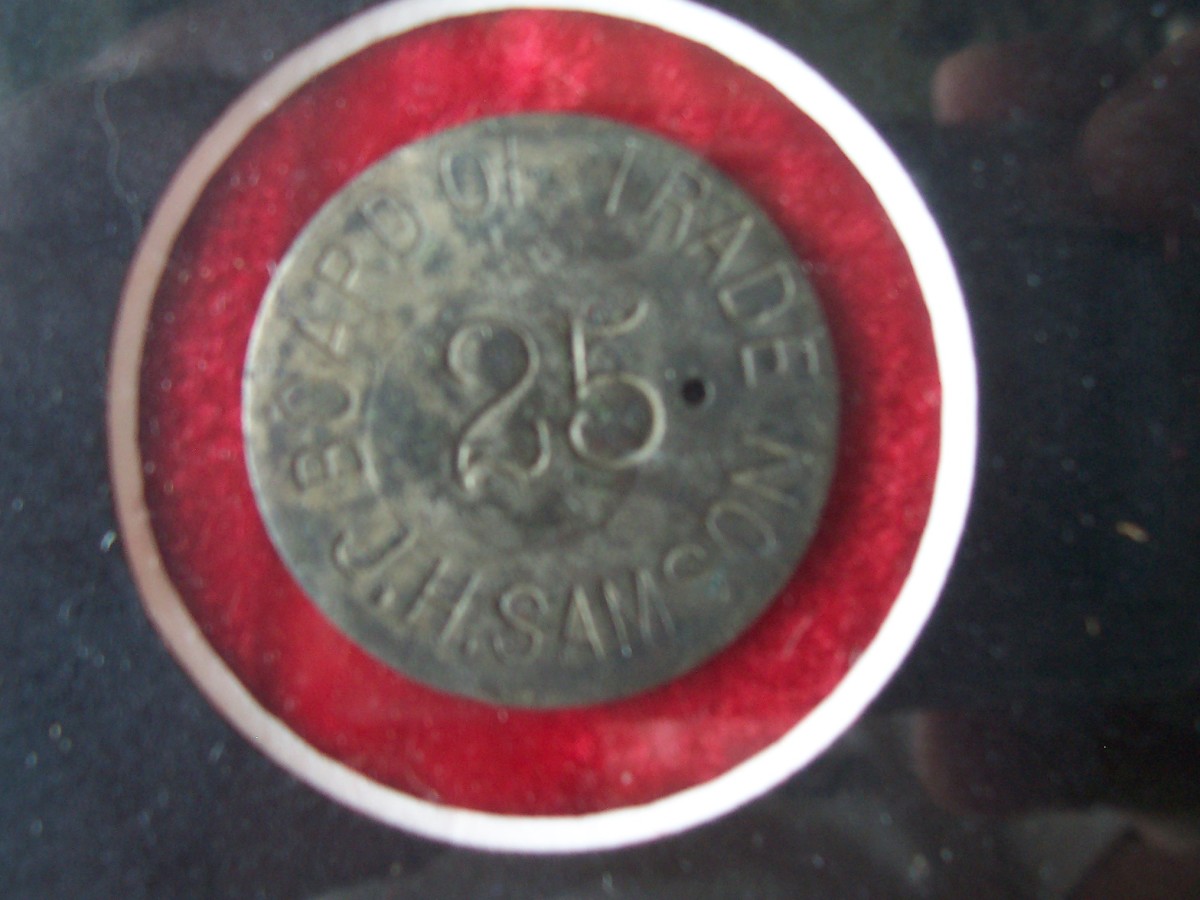Friedrich Mohs Scale of Hardness
First introduced in 1812 by German geologist and mineralogist Friedrich Mohs, Mohs scale of mineral hardness has become the standard for mineral hardness scratch test. The scale is based on one minerals ability to scratch another. Although there have been minerals discovered with a hardness of less than one, such as rubidium, and minerals with a hardness greater than 10, and even minerals that the scale does not apply to, such as mercury, Mohs scale of hardness remains a staple for anyone looking to start a hobby in rock hounding. All minerals on the scale are widely known and sought after, and are great selections in building a collection. Here is the list, starting from the softest to the hardest.
Name
| Chemical Composition
| Hardness
|
|---|---|---|
Talc
| Mg3Si4O10(OH)2
| 1
|
Gypsum
| CaSO4·2H2O
| 2
|
Calcite
| CaCO3
| 3
|
Flourite
| CaF2
| 4
|
Apatite
| Ca5(PO4)3(F,Cl,OH)
| 5
|
Othroclase Feldspar
| KAlSi3O8
| 6
|
Quartz
| SiO2
| 7
|
Topaz
| Al2SiO4(OH–,F–)2
| 8
|
Corundum (Ruby)
| Al2O3
| 9
|
Diamond
| C
| 10
|
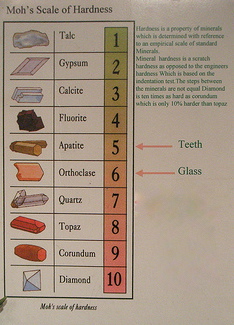
1. Talc
Click thumbnail to view full-size

Talc is an extremely soft mineral most easily identified by its soapy texture and waxy luster. Talc is the main ingredient in talcum powder, and is widely used in cosmetics.
History and Use: talc has been used by humans for over 15,000 years. Talc has been found in early cave dwellers cave paintings. Talc has a variety of industrial uses in fertilizer, paint, plaster, and of course, face powder.
2. Gypsum
Click thumbnail to view full-size



Gypsum comes in three different types: Selenite, Satin Spar and Alabaster. Selenite is a crystalinne form of gypsum, Satin Spar is a fibrous variation and Alabaster is a massive type. Gypsum can be scratched by a fingernail and is warmer to the touch than most minerals because it does not conduct heat.
History and Uses: Gypsum has historically been used in plasters for over 9,000 years. The ancient Egyptians used gypsum for plaster. Gypsum is a main ingredient in drywall because it is harmless to humans and insulates heat. Alabaster has been used for decorations throughout human history.
3. Calcite
Click thumbnail to view full-size


Calcite is a very widespread and plentiful mineral. It is the main component in the very common rock limestone, and is essential in the formation of the very coveted building material marble. Calcite is known for reacting with vinegar or hydrochloric acid.
History and uses: Calcite gets its name from the Greek word "Chalix" meaning lime. Calcite is one of the earths most abundant minerals, making up about 4% of the earths crust. It is used to construction and cement. Calcite is also a carbon dioxide repository, meaning that the formation of calcite removes carbon dioxide from the atmosphere.
4. Fluorite
Click thumbnail to view full-size


Fluorite, known as "the most colorful mineral in the world" gets its name from the Latin word "fluere" meaning flow. Fluorite is very commonly fluorescent and ranges in color from purple, blue, green, brown, yellow,colorless, black to reddish orange. Fluorite can be scratched with a metal knife.
History and Uses: Although relatively soft, some sample of fluorite are quite remarkable and make fine jewelry. Some stunning blue specimens, known as Blue John, came out of Derbyshire, England and were made into stunning vases.
5. Apatite
Click thumbnail to view full-size

Apatite is often confused with other minerals, coming from the Greek word "apatein" meaning to deceive or to be misleading. Apatite is often confused with Beryl as it is commonly in pegmatites. Human teeth or mainly composed of Apatite.
History and Uses: Apatite is mainly used to the manufacturing of fertilizer because it is a good source of Phosphorus, although it is considered a semi-precious gemstone.
6. Orthoclase (Feldspar)
Click thumbnail to view full-size


Orthoclase is a main constituent of manyIgneous rocks, including granite. Some geologists predict that Orthoclase covers about half of the earths surface. Its colors are off-white, yellow, shades of red, and brown to orange.
History and Uses: Orthoclase is used primarily as raw material for the production of glass, ceramics such as porcelain. However Moonstone a variation of Orthoclase has been used since ancient times for jewelry. Both the Romans and the Greeks associated the minerals with their moon Gods/Goddesses, believing that the stone had been made from solidified rays of light from the moon.
7. Quartz
Click thumbnail to view full-size



Quartz is the second most abundant mineral in the Earth's crust, and is the most sought after mineral for collectors. Quartz is commonly known for having six-sided crystals. There are many variations of Quartz. Quartz is believed to have healing properties by hollistic healers. Many types of Quartz are sold as semi-precious stones. Quartz appears in many igneous and sedimentary rocks. On most beaches, the sand is made up almost entirely of Quartz grains.
History and Uses: Due to its high abundance and versatility, Quartz has been used in jewelry and decorations for millennia. Quartz also has many industrial uses. It has a low reactivity with other minerals and special electric qualities, making it used in much electric equipment including timepieces. It also is used to make common glass.
8. Topaz
Click thumbnail to view full-size


Topaz is a widely sought after gemstone, being very beautiful and in array of colors. Topaz is the official birthstone of November. Although Topaz is very hard, it has perfect cleavage and therefore can be split relatively easy, and so she be kept away from harder materials.
History and Uses: Topaz was so coveted byRussianCzars in the 19th century that only he, his family, and the people he gave Topaz to were allowed to own Topaz jewelry. There is a deal of folklore surrounding Topaz as well, it was thought to heal mental disorders in the middle ages, increase strength, detect poison, and when worn as an amulet, drive away sadness and increase intellect.
9. Corundum (Ruby)
Click thumbnail to view full-size


Corundum is actually a clear mineral, but impurities cause Corundum to vary in color from white, grey, blue, green, red, yellow, and brown. Corundum is found in igneous rocks such as syenite and pegmatite.
History and Uses: The blue variation (sapphire) and red variation (ruby) are considered precious gemstones and are very popular in jewelry. Other variations are used as semiprecious gemstones or used as abrasives. Corundum, especially ruby and sapphire, is often manufactured synthetically.
10. Diamonds
Click thumbnail to view full-size


Diamonds are the hardness natural occurring substance in the world except for lonsdaleite. In fact, Graphite, Charcoal, and diamonds are all made of the same element, Carbon. However, the molecules in Graphite are loosely packed, Charcoal is randomly arranged, and Diamonds are very tightly arranged.
History and Uses:
- The first Diamond ever given for engagement was given by Archduke Maximilian of Austria in 1477. Since then Diamonds have come to represent the commitment of marriage.
- Diamonds also has the highest melting point of any natural substance.
- While there is some debate on which is the most valuable Diamond in the world, the "Great Star of Africa" cut from the Cullinan discovered in 1905 weighing 530.2 carats is widely considered the most valuable. It is considered impossible to put a price on it. To put things into perspective, The second most valuable diamond, "The Millennium Star" on the low end, is valued at 205,000,000 million U.S. dollars.

